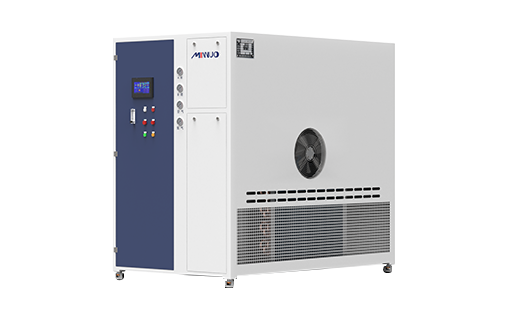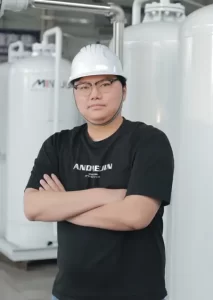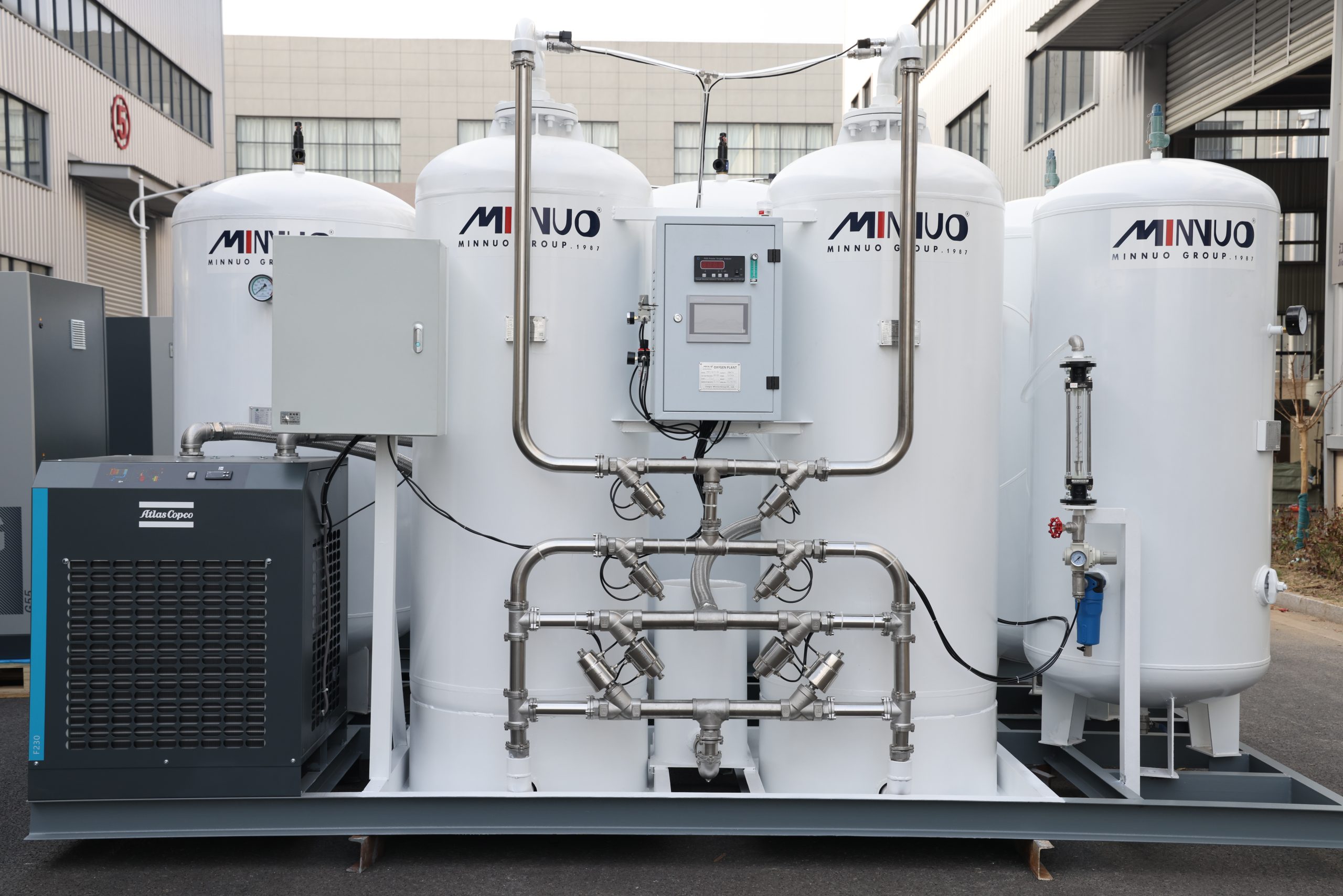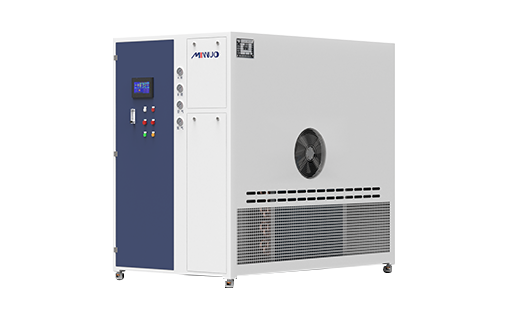A liquid nitrogen generator is revolutionizing industries that require ultra-low temperatures, precise cooling, and inert gas solutions. As a global leader in cryogenic technology, MINNUO designs cutting-edge liquid nitrogen equipment for industries ranging from food processing to aerospace. This article will delve into the working principle of liquid nitrogen generators, their technical specifications, industry-specific applications, and why on-site gas generation is the future of industrial cooling.
A liquid nitrogen generator is a device that produces liquid nitrogen by liquefying nitrogen gas, widely used in industries such as food, medical, biotechnology, and electronics manufacturing. The working principle involves several steps, including air intake and pretreatment, air separation technologies (such as pressure swing adsorption, membrane separation, and cryogenic distillation), liquefaction, and storage. By utilizing on-site gas generation, liquid nitrogen generators can significantly reduce costs, improve energy efficiency, and ensure production safety and compliance.

1. Working Principle of Liquid Nitrogen Generators
Liquid nitrogen (LN₂) is made by liquefying nitrogen extracted from ambient air. Below is a detailed technical breakdown of the process:
1.1 Air Intake and Pretreatment
Purification of the ambient air is the first step in liquid nitrogen production:
- Multi-stage filters: Coalescing filters trap dust particles, and activated carbon filters adsorb hydrocarbons.
- Drying agent dryer: Lowers the air dew point to -40°C, eliminating ice formation risks during cryogenic cooling.
1.2 Air Separation Technologies
Pressure Swing Adsorption (PSA)
- Purity: 95–99.5%.
- Applications: Food freezing, tire inflation.
- Advantages: Efficient, flexible for moderate-purity needs.
Membrane Separation
- Purity: Relatively lower (suitable for small-scale use).
- Applications: Laboratories, small workshops.
- Advantages: Compact equipment, simple operation.
Cryogenic Distillation
- Purity: ≥99.9995% (industrial-grade).
- Applications: Pharmaceuticals, electronics.
- Process: Compresses and cools air to -196°C for high-purity separation.
1.3 Liquefaction and Storage
Liquefiers
- Technologies: Gifford-McMahon cycle, Stirling cycle (use helium gas compression/expansion for ultra-low temperatures).
Storage Systems
- Vessels: Vacuum-insulated Dewar vessels with ≤2% daily evaporation loss.
MINNUO Innovation
- AI-driven predictive maintenance: Identifies faults proactively.
- Variable-speed compressors: Reduce energy consumption by up to 35% compared to traditional systems.
2. Types of Liquid Nitrogen Generators
| Type | Purity | Capacity | Best Applications |
| PSA System | 95–99.9% | 10–500 L/hour | Food freezing, tire inflation |
| Cryogenic | 99.9995%+ | 1,000–5,000 L/hour | Pharmaceuticals, electronics |
| Membrane | 90–99% | 5–100 L/hour | Laboratories, small workshops |
3. Industry-Specific Applications
3.1 Food and Beverage
- Rapid freezing: Freezes food 300% faster than traditional methods, preserving nutrients.
- Cryogenic grinding: Processes heat-sensitive materials (e.g., spices) to retain flavors.
- Modified atmosphere packaging (MAP): Extends shelf life by displacing oxygen.
3.2 Medical and Biotechnology
- Biopreservation: Stores stem cells, vaccines, and sperm at -196°C.
- MRI machines: Maintains superconducting magnet temperatures for precise diagnostics.
- Cryosurgery: Destroys cancerous tissues with minimal trauma.
3.3 Electronics Manufacturing
- Wafer testing: Rapid heat absorption prevents semiconductor overheating.
- Thermal shock testing: Simulates extreme low temperatures for component durability.
3.4 Aerospace and Automotive
- Cryogenic assembly: Shrinks metal parts (e.g., turbine blades) for precision fitting.
- Leak detection: Uses temperature differences to identify system flaws.
3.5 Pharmaceutical Industry
- Freeze-drying: Preserves active ingredients in vaccines and antibiotics.
- Cryogenic grinding: Processes heat-sensitive APIs safely.
4. Key Advantages of On-Site Liquid Nitrogen Production
4.1 Cost-Effectiveness
- Eliminates transportation costs and reduces waste (saves $3–5 per liter on average).
4.2 Sustainability
- Carbon emissions: Reduced by 50% compared to traditional transport (MIT 2023 study).
- Energy recycling: Waste cold energy reused for HVAC or cooling.
4.3 Safety and Compliance
- No DOT certification required for non-flammable gas.
- Safety features: Automatic oxygen deficiency monitors (ODM) and emergency ventilation systems.
5. Technical Specifications: Choosing the Right System
5.1 Capacity Requirements
- Small laboratories: 10–50 L/day
- Medium-sized factories: 500–2,000 L/day
- Heavy industries: 5,000 L/day+
5.2 Purity Levels
- 95–99%: Fire extinguishing, non-critical uses.
- 99.9–99.999%: Food and electronics industries.
- 99.9995%+: Medical, aerospace.
5.3 Energy Consumption
- PSA System: 0.5–1.2 kWh/m³
- Cryogenic System: 1.5–3 kWh/m³
5.4 Space Limitations
- Compact skid-mounted units: 3m x 2m (ideal for limited spaces).
- Large independent units: For large-scale production.
6. Installation and Maintenance
6.1 Site Preparation
- Environment: Stable temperature (10–35°C), good ventilation, and heat dissipation.
- Power supply: Industrial 380–480V.
6.2 Daily Maintenance
- Daily: Check filter pressure, oil levels, and clean impurities.
- Monthly: Calibrate sensors and inspect cooler seals.
- Annually: Replace PSA molecular sieves and test Dewar vessel vacuum integrity.
7. Frequently Asked Questions (FAQs)
Q1: How does MINNUO ensure medical-grade purity?A: Triple distillation and real-time gas analyzers meet ISO 13485 and USP-NF standards.
Q2: Can the generator integrate with existing pipelines?A: Yes, with custom adapters compliant with ASME B31.3.
Q3: What is the ROI for on-site generation?A: Most clients achieve ROI within 18–24 months (use the [ROI calculator] for estimates).
8. Case Study: MINNUO’s Real-World Application
Client: European frozen food manufacturerChallenge: High transportation costs ($12,000/month) and unreliable supply.Solution: Installed MINNUO cryogenic generator (1,200 L/day).Results:
- Cost savings: $8,500/month.
- Purity: 99.99% for MAP, reducing spoilage by 22%.
9. Future Trends in Liquid Nitrogen Generation
9.1 Green Production
- Hydrogen-powered compressors and renewable energy integration.
9.2 IoT Integration
- MINNUO’s SmartCold platform for remote monitoring and predictive maintenance.
9.3 Miniaturization
- Portable generators for field hospitals and disaster response.
10. MINNUO Advantages
- Precision Engineering: ±0.1°C temperature control.
- Global Support: 24/7 multilingual technical support (12 languages).
- Custom Solutions: Hybrid PSA-cryogenic systems for unique needs.
11. Conclusion
The future of liquid nitrogen production hinges on sustainability and smart technology. MINNUO leads with innovations like IoT integration and energy-efficient designs, offering flexible solutions for all scales—from industrial giants to portable applications. Choose MINNUO as your partner in future-proofing your business, ensuring competitiveness in a global market driven by cutting-edge cryogenic technology.






 sales2:+86 17506119168
sales2:+86 17506119168

